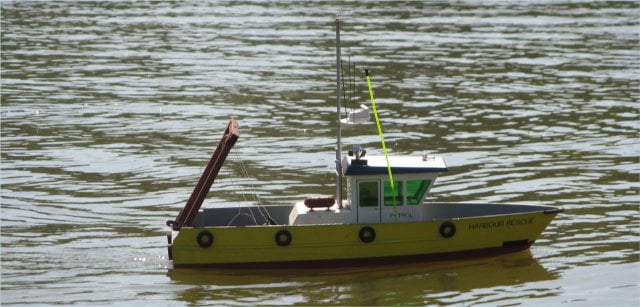
Electric Rescue Boat
There were concerns over the reliability of the steam tug - it being based on a home made engine design.
So a rescue boat was constructed to retrieve the tug from the boating lake, in the event of a breakdown.

There were concerns over the reliability of the steam tug - it being based on a home made engine design.
So a rescue boat was constructed to retrieve the tug from the boating lake, in the event of a breakdown.

The rescue boat was built from a kit by Robbe Models, called Paula III. This kit was chosen because it had all the right criteria to make a good rescue boat; it was strong enough, powerful enough, was designed to be simple to build and everything except the battery and radio gear were included in the kit, it even had a working crane.
The construction was very straight forward and the kit was amazingly complete with details such as fog horns and life buoys being included. Some working lights were also added, which the model was well designed to accommodate.
To keep costs down the model was fitted with a 2 channel radio set from an old R/C car ,but this would leave no channels available to operate the crane. Therefore the crane would be modified to hold a magnet/hook in the right place to latch onto the tug. It would also have a rubber buffer added to the bow to allow it to push a stranded boat home.
The crane was modified with some extra pulleys, a simple ratchet and a damper from a kitchen door into a working assembly.
The idea was that the boat would be dispatched with the crane leaning backwards, holding the hook/magnet at the correct height to match the boat being rescued. Once attached, the rescue boat would pull slowly forwards and initially this would winch the crane forwards into the towing position and latch into place with the ratchet. The damper was found to be needed to stop the crane falling forwards releasing slack rope and risking a tangle. This sequence is shown below

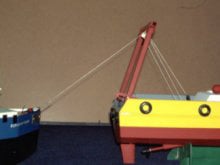
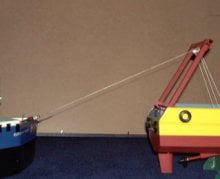
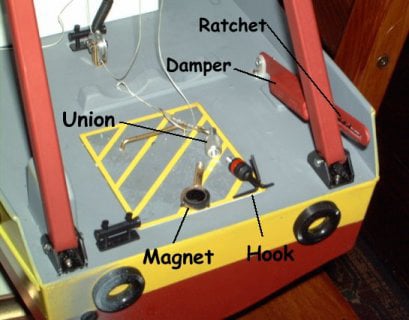
The tow line was equip with 2 attachments, a 3 pronged grappling hook and a rare earth magnet medallion. Either one could be screwed into the union on the end of the line. A float would also be added to the line in case the tow was lost. This would help stop the line getting caught in the propeller.
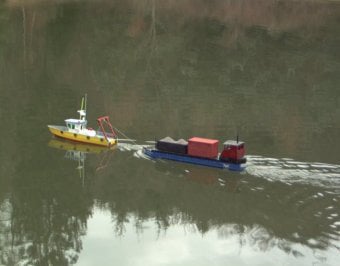
The boat and hook system was tested using a dummy barge, with steel plates mounted bow and stern, to try the magnet.
On the whole very successful, but a few things were learnt :
Trying to see what was going on at a long distance was the greatest difficulty in picking up the boat.
The wind was the next biggest obstacle in making a successful grab.
Reverse maneuverability was very poor.
The crane winch system worked fine.
It was easier to grab the back of the barge because the steel plate was larger. A larger plate at the front would help.
The grappling hook was too tricky to use but the magnet was good.
The absence of a float on the magnet was not a problem. In fact the weight of the magnet kept the rope taught and away from the propeller whereas a float would allow loops to form. The float idea was abandoned.
The magnet was strong enough for most scenarios provided there were no sudden snatches.
Conclusion - The system should be good enough for the steam tug.
Free AI Website Software